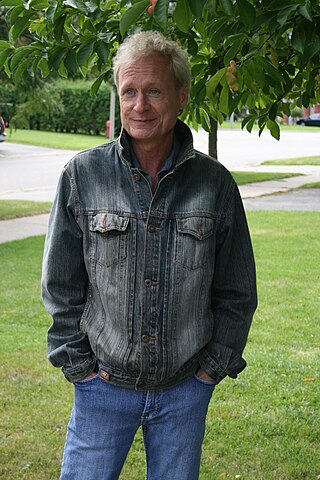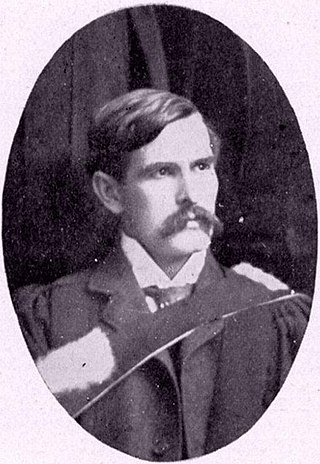
As a literary device or artistic form, an allegory is a narrative or visual representation in which a character, place, or event can be interpreted to represent a meaning with moral or political significance. Authors have used allegory throughout history in all forms of art to illustrate or convey complex ideas and concepts in ways that are comprehensible or striking to its viewers, readers, or listeners.

William Blake was an English poet, painter, and printmaker. Largely unrecognised during his life, Blake is now considered a seminal figure in the history of the poetry and visual art of the Romantic Age. What he called his "prophetic works" were said by 20th-century critic Northrop Frye to form "what is in proportion to its merits the least read body of poetry in the English language". While he lived in London his entire life, except for three years spent in Felpham, he produced a diverse and symbolically rich collection of works, which embraced the imagination as "the body of God", or "human existence itself".
Herman Northrop Frye was a Canadian literary critic and literary theorist, considered one of the most influential of the 20th century.

Edwin John Dove Pratt, who published as E. J. Pratt, was a Canadian poet. Originally from Newfoundland, Pratt lived most of his life in Toronto, Ontario. A three-time winner of the country's Governor General's Award for poetry, he has been called "the foremost Canadian poet of the first half of the century."

Brian David Boyd is a professor of literature known primarily as an expert on the life and works of author Vladimir Nabokov and on literature and evolution. He is a University Distinguished Professor in the Department of English at the University of Auckland, New Zealand.

Milton is an epic poem by William Blake, written and illustrated between 1804 and 1810. Its hero is John Milton, who returns from Heaven and unites with the author to explore the relationship between living writers and their predecessors, and to undergo a mystical journey to correct his own spiritual errors.
Arthur James Marshall Smith was a Canadian poet and anthologist. He "was a prominent member of a group of Montreal poets" – the Montreal Group, which included Leon Edel, Leo Kennedy, A. M. Klein, and F. R. Scott — "who distinguished themselves by their modernism in a culture still rigidly rooted in Victorianism."
Jeffery William Donaldson is a Canadian poet and critic.
Jean Jay Macpherson was a Canadian lyric poet and scholar. The Encyclopædia Britannica calls her "a member of 'the mythopoeic school of poetry,' who expressed serious religious and philosophical themes in symbolic verse that was often lyrical or comic."
Alvin A. Lee, is a Canadian literary critic and former academic administrator.

The prophetic books of the 18th-century English poet and artist William Blake are a series of lengthy, interrelated poetic works drawing upon Blake's own personal mythology. They have been described as forming "what is in proportion to its merits the least read body of poetry in the English language". While Blake worked as a commercial illustrator, these books were ones that he produced, with his own engravings, as an extended and largely private project.
Archetypal literary criticism is a type of analytical theory that interprets a text by focusing on recurring myths and archetypes in the narrative, symbols, images, and character types in literary works. As an acknowledged form of literary criticism, it dates back to 1934 when Classical scholar Maud Bodkin published Archetypal Patterns in Poetry.
The Tamarack Review was a Canadian literary magazine, published from 1956 to 1982. Established and edited by Robert Weaver, other figures associated with the magazine's editorial staff included Anne Wilkinson, William Toye and John Robert Colombo. In addition, Ivon Maclean Owen was among the founding editors. During the early years of the magazine, there was also an editorial advisory board made up of F.R. Scott, A.J.M. Smith, James Reaney, Alan Crawley, and George Woodcock. The magazine was published on a quarterly basis and had its headquarters in Toronto.

Bruce William Powe, commonly known as B. W. Powe, is a Canadian poet, novelist, essayist, philosopher, and teacher.
Imre Salusinszky is an Australian journalist, political adviser and English literature academic who is currently media adviser to former Australian Government Minister for Communications, Urban Infrastructure, Cities and the Arts, Paul Fletcher.

Sonnet 109 is one of 154 sonnets written by the English playwright and poet William Shakespeare. It's a member of the Fair Youth sequence, in which the poet expresses his love towards a young man.

"A Defence of Poetry" is an unfinished essay by Percy Bysshe Shelley written in February and March 1821 that the poet put aside and never completed. The text was published posthumously in 1840 in Essays, Letters from Abroad, Translations and Fragments. Its final sentence expresses Shelley's famous proposition that "poets are the unacknowledged legislators of the world."

Charles Heavysege was a Canadian poet and dramatist. He was one of the earliest poets to publish in Canada. He is known for his critically acclaimed play Saul.
Anne Cochran Wilkinson was a Canadian poet and writer. She was part of the modernist movement in Canadian poetry in the 1940s and 1950s, one of only a few prominent women poets of the time, along with Dorothy Livesay and P. K. Page.

Oscar Pelham Edgar was a Canadian teacher. He was a full professor and head of the Department of English at the Victoria College, Toronto from 1910 to 1938. He wrote many articles and several monographs on English literature. He had a talent for identifying and encouraging promising new authors. He was an active member of various literary societies, and was the force behind the establishment of the Canadian Writers’ Foundation to help needy authors.










